Last week’s CSA basket just screamed “make kimchi” to me.
What, your vegetables don’t talk to you? Mine apparently do. Kimchi is an extremely popular Korean dish (more like Korean staple) that shows up in a million different recipes. And just like many staple items in a culture’s repertoire, there are endless ways to make it. It’s the type of dish that each family has their own version of. Since I clearly don’t come from a Korean family, I had to borrow a recipe from a friend.
Making kimchi requires three phases. First you chop up all your vegetables and soak them in salt so they leach out some moisture. Then, you combine the vegetables with a spicy paste and transfer it to jars, sealing them tight. Lastly, you wait.
Our friend Sam joined us in making this enormous batch of kimchi, and between the two and a half of us (the half being Jason, not the baby), we managed to finish in about two hours.
Please note that you’ll need some special equipment for this recipe: an enormous bowl for the vegetables before they are salted, rubber gloves, and large mason jars. There is so much hot pepper in this recipe that you’ll want to protect your skin when mixing it all together, and doing it with a spoon or spatula would be very difficult. Safety first, everyone.
Many kimchi recipes need weeks to properly ferment, but what I like about this one is that the kimchi is ready the next day, and only gets better as the days go on. The other benefits of this particular recipe are that its vegan and that you can let it ferment in the fridge (rather than burying it in a dark place for a week) which makes it a little more pregnancy safe. I’m sure that doesn’t matter to most of you, but you know, just throwing it out there.
This recipe produced a little more than three 32 ounce mason jars worth of kimchi. Speaking of mason jars, please go read this Onion article titled “We’re Going To Enjoy This Cocaine-Fueled Mason Jar Rocket Ride For As Long As It Lasts.” Honestly, I don’t usually like this level of vulgarity, but I was crying laughing. My personal favorite line, “As long as every gastropub and Williamsburg speakeasy wants to keep pouring craft cocktails into our jars, we’re gonna swim in uncut Peruvian street spice and party like savages.”
And what to do with your kimchi once it’s ready to be eaten? Oh man, the options are endless. Here are some ideas:
- Make a breakfast burrito with 2 scrambled eggs, a little gruyere cheese, and a 1/4 – 1/2 cup of kimchi. Wrap in a tortilla and enjoy (I had this for breakfast yesterday, so good).
- Add it to your bipimbap.
- Add it to fried rice.
- Roast some chicken with kimchi smashed potatoes.
- Make kimchi dumplings.
- Make kimchi pancakes.
- Make a kimchi ramen bowl.
- ~3 lbs Napa cabbage, washed, cored, and chopped
- ~1-2 lb diakon radish, chopped
- ~2 lbs carrots, chopped
- ~2 lbs leeks, chopped
- ~1/2 lb chili peppers
- ~1-2 lb kohlrabi, chopped
- 6 tablespoons Kosher salt
- ½ cup sweet rice flour
- 3 cups water
- ¼ cup sugar
- 1 cup soy sauce
- 2 cups hot pepper flakes (This gives the kimchi a nice heat, but you can add more or less depending on taste. Err on the side of not spicy enough, you can always add some sriracha.)
- 1 cup garlic, minced
- 1-2 tablespoons ginger, minced
- 1 cup white onion, chopped
- Getting the exact proportions of the vegetables isn't critical, and feel free to use other things that are in your fridge. Kimchi is forgiving.
- Combine all chopped vegetables listed under "vegetable" section in a very large bowl. Add salt and mix well. Let sit for an hour at room temperature.
- Drain off the liquid and return vegetables to bowl.
- While vegetables are sitting, prepare the paste. In a medium sized pot, combine sweet rice flour and water. Bring to a boil over medium heat, stirring until mixture starts to bubble.
- Add sugar and stir for a few more minutes until it's translucent. Let paste cool completely.
- Add in soy sauce, hot pepper flakes, garlic, ginger, and onion.
- Combine the drained vegetables and the cooled paste. Wearing food-safe gloves, mix the vegetables with your hands until the paste is evenly distributed.
- Pack the kimchi tightly into one giant gallon sized jar or into multiple smaller jars. Seal with the lids and store in refrigerator for up to four weeks. The kimchi will be edible immediately but will be sweet. As time passes the kimchi will sour and become even more delicious.







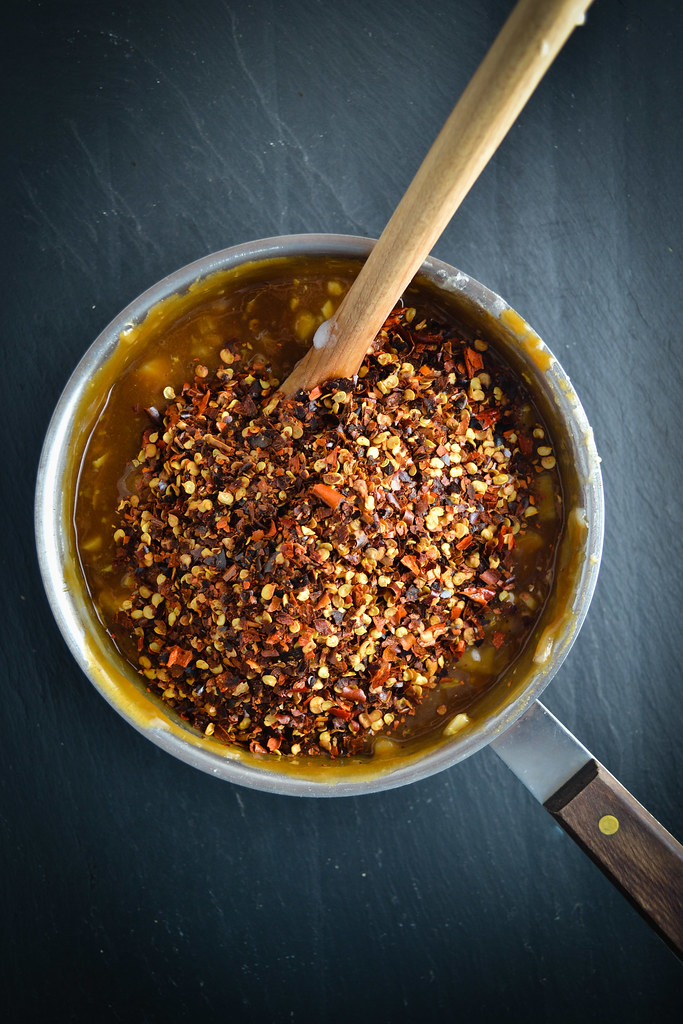

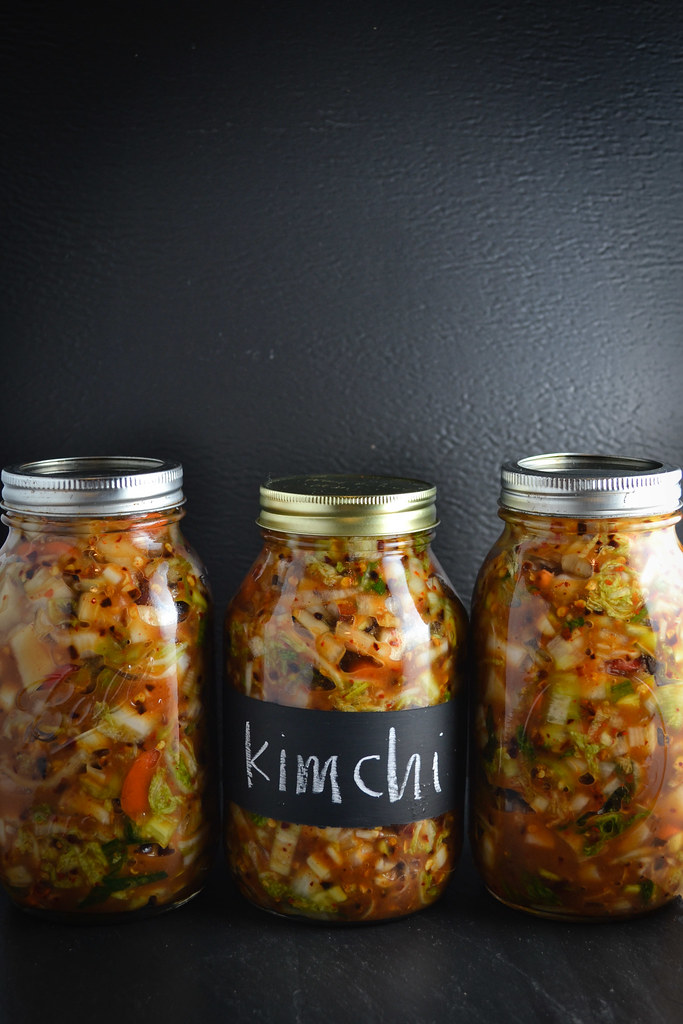
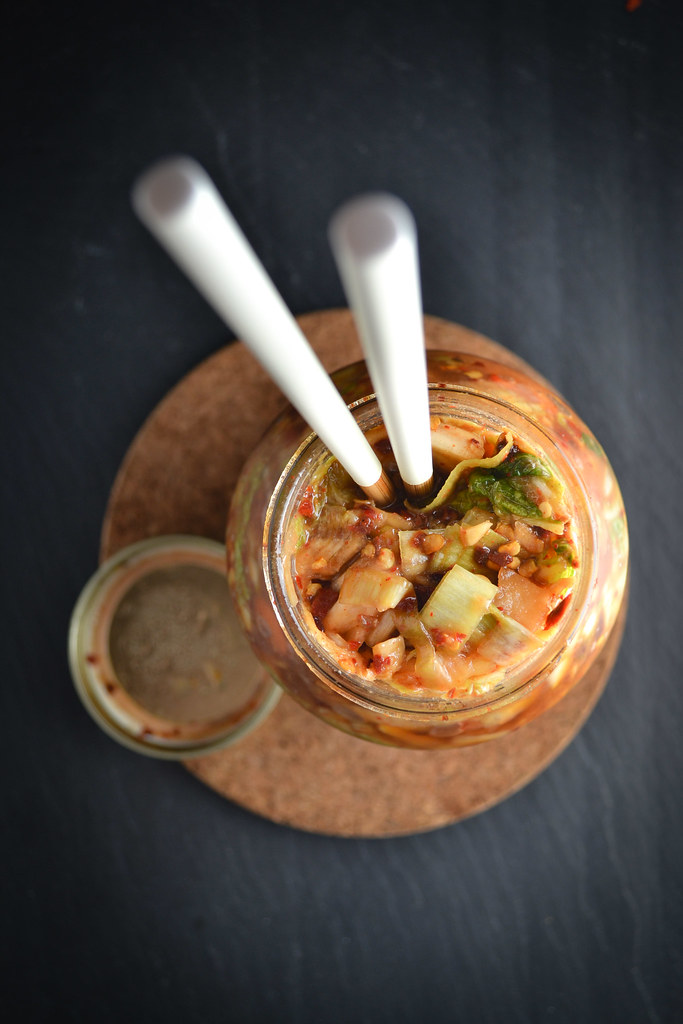
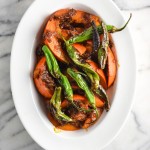

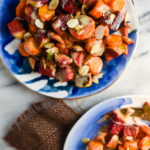
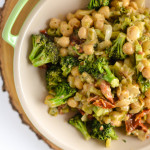






Did you use Korean red pepper flakes or the standard I’ll find in any super market spice aisle? Thanks!
writes Scott IsaacsonSorry for the late reply, I’ve been out of the country!
We used regular red pepper flakes but I recommend going to an Asian grocery store and getting the Asian kind for a more authentic kimchi. If you can’t find it, regular red pepper flakes work just fine!
writes Vicky[…] Kimchi [Fermented Korean Cabbage] // Napa Cabbage, Daikon Radish, Leeks, Sub Red Onion for White Onion, Skip the Carrots (unless you have some leftover), Kohlrabi and Chili Peppers OR Substitute Beets, Sweet Peppers and Broccoli Stems for them // This recipe makes a boat load of kimchi. Vicki from Things I Made Today uses pretty much everything that was in her CSA box for this recipe but you can feel free to substitute (or leave things out for a smaller batch). It’s also got great ideas about what to do once you make the kimchi (like kimchi pancakes and a kimchi ramen bowl), but you can also just use it as a condiment on literally anything. Yum. […]
writes CSA Week 17.This is not authentic Korean style kimchi.
writes Dong JooKorean kimchi has these main ingredients:
Napa cabbage, sea salt, korean chili powder (gochugaru), shredded Korean daikon (the fat kind, not skinny), fish sauce, Korean salted brine shrimp (saewoo jeot), garlic, ginger, sweet rice paste, Korean chives or green onions.
I’m Korean and have been making kimchi since I was a small child.
[…] Kimchi // Uses Carrots, Napa Cabbage // Vegetarian […]
writes Carrots – Middle Fork Farm[…] Kimchi // Uses Carrots, Daikon, Kohlrabi, Leeks, Napa Cabbage // Vegetarian […]
writes Napa Cabbage – Middle Fork Farm[…] Kimchi // Uses Carrots, Daikon, Kohlrabi, Leeks, Napa Cabbage // Vegetarian […]
writes Leeks – Middle Fork Farm[…] Kimchi // Uses Carrots, Daikon, Kohlrabi, Leeks, Napa Cabbage // Vegetarian […]
writes Kohlrabi – Middle Fork Farm